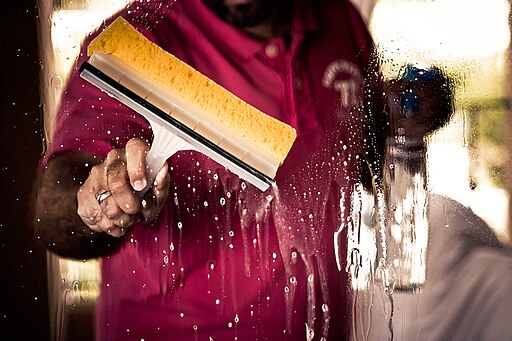
In a recent study from the University of Washington, scented laundry products were found to emit more than 25 “volatile” air pollutants from dryer vents, including carcinogens such as acetaldehyde and benzene. The extent of the emissions was substantial – equivalent to 3% of the total yearly acetaldehyde emissions from cars. Yet unlike cars, which must follow stringent vehicle emissions standards, household detergents, such as laundry soaps and dryer sheets, are mostly unregulated.
Ever since this study was published, alarming news articles and blog posts have been circulating on social media, urging readers to avoid scented laundry products. For some reason, dryer sheets have been particularly implicated, possibly because the data collected in the study was through emissions from dryer vents. However, all household and personal care products with chemical fragrances contain similar compounds, and so there is no reason for dryer sheets to be singled out. Such household products include not just laundry detergents and dryer sheets, but also air fresheners, fabric softeners, dishwashing detergents, personal care products, cosmetics, after-shave, soaps, lotions, and hand sanitizers.
What is of most concern is not just the prevalence of toxic compounds in our household cleaning products, but the fact that so many of them do not need to be listed on product labels. Of all the volatile compounds emitted during the study, fewer than 3% were disclosed on any product label or MSDS (material safety data sheet) because they are exempt from disclosure. This means that 97% of the potentially hazardous ingredients used to make up the fragrant scents in our household cleaning products are unknown to us, and to government regulators.
Terms such as “perfume”, “parfum”, “natural fragrance”, “pure fragrance”, or “organic fragrance” sound misleadingly simple and safe, but any of these fragrance mixtures can contain up to several hundred different chemicals; in total, more than 2600 different chemical ingredients have been documented for use in fragrances. Yet manufacturers are not required to report any of them unless the chemicals are considered hazardous. Sadly, surveys of MSDSs found most to be incomplete, inaccurate, or both, as they are reliant on manufacturers or importers to vouch for their safety.
If you think that “natural” or “organic” household cleaning products with fragrances are safer, think again. The gas chromatography/mass spectometry tests used in the study found that products labelled as more natural, or environmentally friendly emitted similar amounts of volatile organic compounds as the more popular brands. On average, all fragrant household products emitted 17.1 different volatile organic compounds.
The most common of these chemicals, found in more than one-third of the fragrant household products, were terpenes such as d-limonene, linalool, α-pinene, β-pinene, as well as citronellol, eucalyptol, and geraniol. Such chemicals have the potential to create adverse health effects like asthma, mucosal symptoms, and allergic contact dermatitis. Others can interfere with hormone regulation and may even cause cancer.
So, how can avoid unnecessary exposure to such chemicals? By using fragrance-free household cleaning products, we can substantially reduce our risk. You can also switch to simple vinegar and baking soda for most of your cleaning needs, although this won’t help you clean your clothes.
Considering the vast number of chemicals now used in the manufacture of personal care products, and household cleaning products, we should push for a change in how they are regulated. While there are environmental protections for outdoor air, or “air external to buildings”, up until now, there has been little consideration of potential pollutants in our indoor air, even though our exposure now is higher than it has ever been in the past.
http://www.washington.edu/news/2011/08/24/scented-laundry-products-emit-hazardous-chemicals-through-dryer-vents/
About the Author: Rebecca Wong has a BA in English Literature from the University of Waterloo and has been working in the herbal business since 2000. She studied at the Ontario College of Traditional Chinese Medicine under respected authorities Paul Des Rosiers and Vu Le, and graduated from the East West School of Planetary Herbology under Michael Tierra. She received training as a yoga teacher at The Branches in Kitchener/Waterloo, and therapeutic yoga teacher training from the School for Somatic Soulwork under Deniz Aydoslu. She now teaches yoga for anxiety, depression and burnout at Rebecca's Restful Yoga Studio in Toronto.
